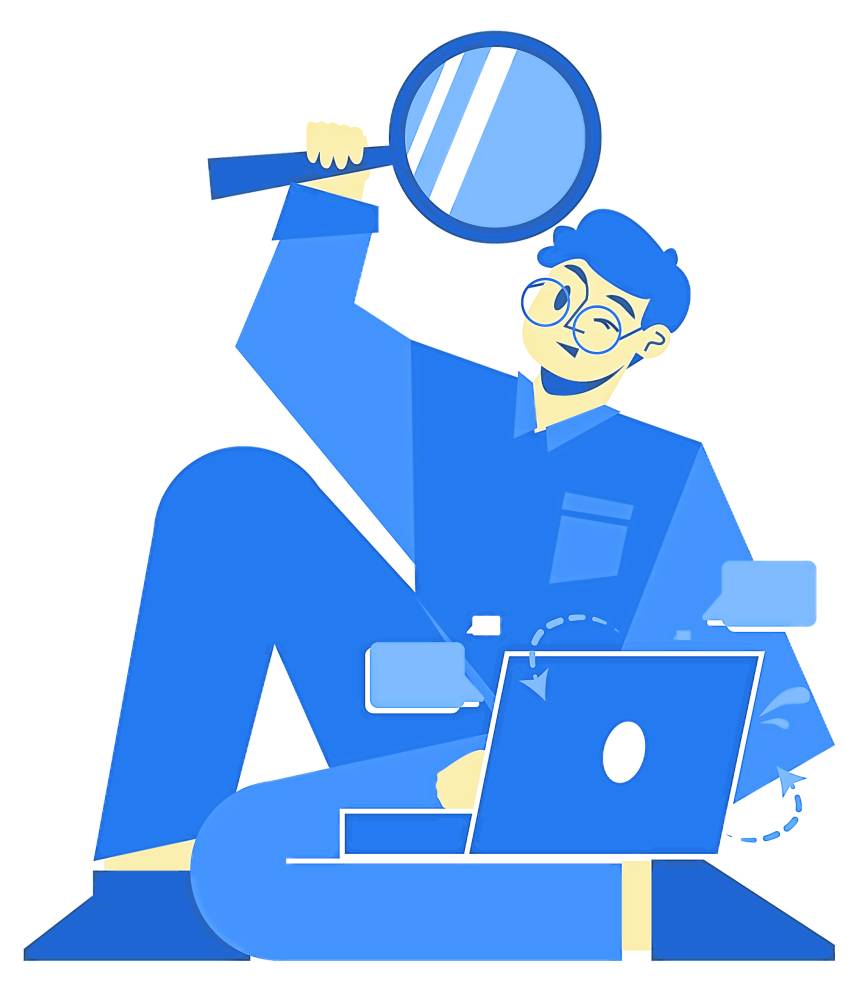
Illustration by Rachel Revilla
In the Philippines, more than 76 million people out of a population of 111 million have access to the internet, according to a 2022 study by We Are Social and Kepios. Filipinos spend more than 10 hours a day connected to the internet, using a variety of channels for communication, entertainment, learning, news, commerce, and more.
Digital technology has become ubiquitous in people's lives, providing an effective way for brands and services to promote themselves and engage with customers.
Read: Philippine social media craze: 77% of Filipinos are more active online than in real life
Digital marketing is defined as using technology-enabled digital channels to deliver products and services to potential customers. Anything outside of the traditional advertising touch points of TV, cable, radio, and print often falls under the realm of digital channels and platforms.
Web 1.0, 2.0, 3.0
Before giving examples of digital channels and platforms, it is important to understand the different stages of the World Wide Web, as the digital age comes with its own set of terminology that continues to develop and change at a tremendous speed. In fact, the Internet has evolved a lot since its original invention in 1989 by computer scientist Tim Berners-Lee, who invented the World Wide Web.
Web 1.0 or the read-only web is a collection of static, read-only websites that users cannot interact with. Examples include the original versions of old websites where people were meant to read information.
Web 2.0 or the participatory social web allows users to interact by sharing and collaborating in more meaningful ways. Examples include social media, blogs, podcasts, and web-based applications that encourage participation and contribution such as commenting, voting, and tagging.
Reading: Philippines' digital economy expected to reach $24 billion in 2023
Web 3.0 or the Semantic Web is an extension of Web 2.0, but it adds meaning and context to ideas shared online, making them more intelligent and usable. Examples include digital assets such as cryptocurrencies (e.g. Bitcoin) and fungible tokens (e.g. Ether), digital content such as non-fungible tokens, the metaverse, and blockchain games (using artificial intelligence and machine learning) that aim for a decentralized (no intermediaries) and autonomous internet without authentication.
By delving deeper into the complex and ever-changing landscape of the digital realm, digital marketing has been separated out as a separate discipline or subset of advertising and promotion.
The functions of both advertising and digital marketing are to inform, persuade and remind, but digital marketing, enabled by technology, can now cover a much broader range of marketing functions, including advertising, promotion, public relations and even sales.
advertisement
Technology and profiling tools present on digital platforms have enabled brands to profile, target and localize who they want to speak to. Audience segmentation has never been easier as customers can be filtered based on demographics, location, behavior and even interests.
When brands publish captions, posters, audio and video materials, they can track and measure the performance of each, faster than with traditional media. They can see how many people saw it or interacted with it, and even filter the locations and types of people who saw their ad campaigns. This gives marketers a faster feedback loop to improve and capitalize on their campaigns.
One-to-one conversations and interactions between brands and customers are also now possible through digital platforms as people can easily comment, send messages and respond to advertisements through the digital platforms they use.
sales promotion
Push tactics, which allow brands to acquire customers and urge them to make an immediate purchase, are now possible in the digital space as well. There are many ways to achieve digital sales promotion, such as online vouchers, affiliate links, flash sales, location-based messaging blasts, etc. These efforts drive customers to an online or physical store where they make a purchase.
Shopping apps like Lazada and Shopee allow merchants to offer free shipping coupons, bundled discounts, cash discounts, and more to customers.
Online personalities promote shopping codes and affiliate links to their customers, offering them special discounts and promotions on the products they use in their vlogs and photos.
Banner ads, which click through to a website, are also used by brands to offer limited-time special deals to their customers.
The advent of “flash sale” websites has created time-limited sale promotions that many people take advantage of in a limited time period. Depending on the products available for sale, these promotions may only last for an hour or less.
public relations
Technology has democratized content and communication, allowing everyone to have their own platform to communicate and build a community. This has led to the emergence of online personalities, key opinion leaders and influencers who are now part of the way information and opinions are gathered. Including key influencers in shaping your marketing communications cannot be underestimated.
Today's disgruntled customers are different. They simply post their grievances on their social media feeds for all to read. Even if a company or its stakeholders are not directly involved in the problem and could do something to help, public opinion can still turn against them.
Virtual events and experiences are made possible by digital technology, allowing people and brands to interact with each other through communities, video calls and gaming platforms.
Videoconferencing platforms such as Zoom, Google Meet and MS Teams have eliminated the need for physical offices and enabled remote working.
Popular online open-world games such as Fortnite, Roblox and Minecraft allow brands to create unique digital experiences within these platforms, creating virtual concerts and branded locations within the games.
sale
The emergence of e-commerce platforms and providers has enabled customers to make purchases without having to visit a physical store. The retail industry has evolved from brick-and-mortar stores to hybrid and fully digitalized sales platforms.
Through its hybrid platform, SM Supermalls has created a website and mobile app called SM Mall Online, which allows customers to purchase products from SM affiliates across department stores, supermarkets, restaurants, cinemas and retail outlets in nearby SM Supermalls and gives them the option to have the products delivered to their home or pick them up in-store.
Similarly, Mercury Drug Online offers customers the option to purchase by phone, text message, or online, making it more convenient for everyone to access the products. Products can be delivered or picked up by the customer.
Read: Government calls for more investment in broadband infrastructure
And then there's the fully digital store. Pick-a-roo is a mobile app that doesn't have a physical retail store. Instead, it curates location-based merchants like restaurants, grocery stores, and shops. Pick-a-roo buyers buy products for customers and deliver the orders to them.
Lazada, Shopee and Zalora are online marketplaces that curate local as well as international merchants and brands for customers to purchase through their mobile phones and digital devices. These platforms employ various push and pull techniques to increase their customer base and purchases.
Digital marketing objectives must be aligned with advertising objectives. They must be clearly defined and relevant to the existing market situation. The challenge is to find the sweet spot where you can build trust between your brand and your customers in the digital space. —Contributed
Josiah Go, Chiki Escarial Go and RG Gabunada are the co-authors of “Marketing for Beginners: Start Strong, Succeed Fast,” which is currently the No. 1 marketing book in the Philippines with nearly 500 Filipino case studies. The book, which has broken sales records since its release in the Philippines, is available at National Book Stores nationwide.


